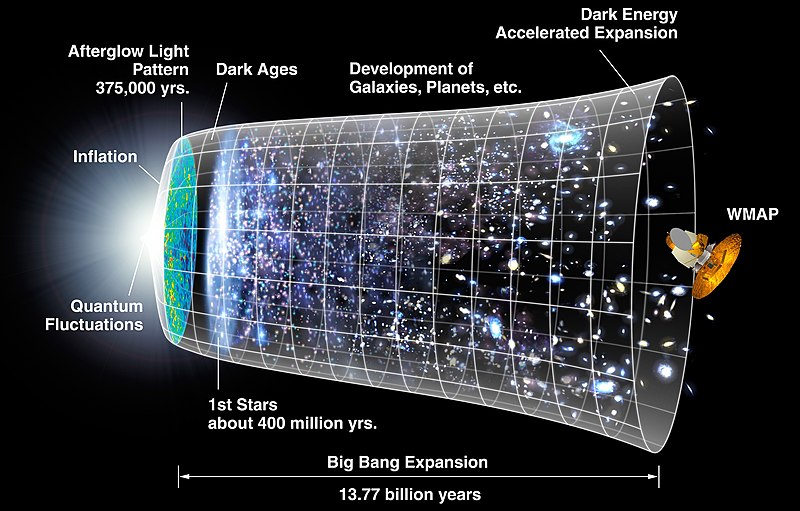The Universe comprises everything perceived to exist physically, the entirety of space and time, and all forms of matter and energy. The term Universe may be used in slightly different contextual senses, denoting such concepts as the cosmos, the world, or nature. The word Universe is usually defined as encompassing everything.

SPACE TIMELINE
This timeline of the Big Bang describes the events according to the widely accepted scientific theory of the Big Bang, using the cosmological time parameter of comoving coordinates.
Best available measurements as of 2009 suggest that the initial conditions occurred between 13.3 and 13.9 billion years ago.
It is convenient to divide the evolution of the universe since then into three phases. The very early universe, which is still poorly understood, was the split second in which the universe was so hot that particles had energies higher than those currently accessible in particle accelerators on Earth. Therefore, while the basic features of this epoch have been worked out in the big bang theory, the details are largely based on educated guesses.
Following this period, in the early universe, the evolution of the universe proceeded according to known high energy physics. This is when the first protons, electrons and neutrons formed, then nuclei and finally atoms. With the formation of neutral hydrogen, the cosmic microwave background was emitted.
Matter then continued to aggregate into the first stars and ultimately galaxies, quasars, clusters of galaxies and superclusters formed.

No comments:
Post a Comment
Note: Only a member of this blog may post a comment.